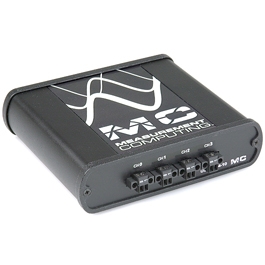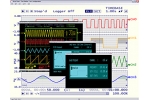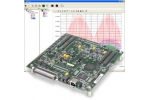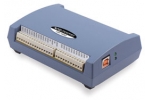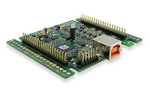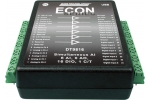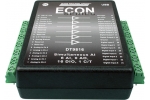The USB-2404-10 is designed for both high-speed and accuracy. These devices are ideal general-purpose analog input devices because of their resolution, sample rate, and input range.
All USB-2404 Series devices include channel-to-channel isolation to protect the entire system from harmful voltage spikes and to eliminate measurement errors caused by ground loops.
Analog Input
Each USB-2404 Series device provides four simultaneous-sampling analog inputs, and 250 Vrms channel-to-channel and channel-to-ground isolation.
All devices can connect to either ground-referenced or floating signal sources.
Timebase-Controlled Sample Rates
The USB-2404-10 offers sample rates up to 50 kS/s. A master timebase frequency controls the sample rate of these devices.
An excitation circuit is enabled for all analog input modes that require excitation. The ADC and excitation circuits are reconfigured in each mode to accommodate each sensor type.
The device also supports class II TEDS smart sensors.
Anti-Alias Filtering
The USB-2404-10 combines analog and digital filtering to accurately represent in-band signals while rejecting out-of-band signals. The filters discriminate between signals based on the frequency range, or bandwidth, of the signal. The passband, stopband, and alias-free bandwidths are important.
This device represents signals within the passband frequency, as quantified primarily by passband ripple and phase nonlinearity.
All signals within the alias-free bandwidth are either unaliased signals or signals that have been filtered by at least the amount of the stopband rejection.
Passband Bandwidth: The signals within the passband bandwidth have frequency-dependent gain or attenuation. The small amount of variation in gain with respect to frequency is called the passband flatness. The device digital filters adjust the frequency range of the passband to match the data rate. Therefore, the amount of gain or attenuation at a given frequency depends on the sample rate.
Stopband Bandwidth: The filter significantly attenuates all signals above the stopband frequency. The filter is used primarily to prevent aliasing. Therefore, the stopband frequency scales precisely with the sample rate.
The stopband rejection (100 dB) is the minimum amount of attenuation applied by the filter to all signals with frequencies within the stopband bandwidth.
Alias-Free Bandwidth: Signals that appear in the alias-free bandwidth of the USB-2404-10 are not aliased artifacts of signals at a higher frequency. The alias-free bandwidth is defined by the ability of the filter to reject frequencies above the stopband frequency. The alias-free bandwidth equals the sample rate minus the stopband frequency.

